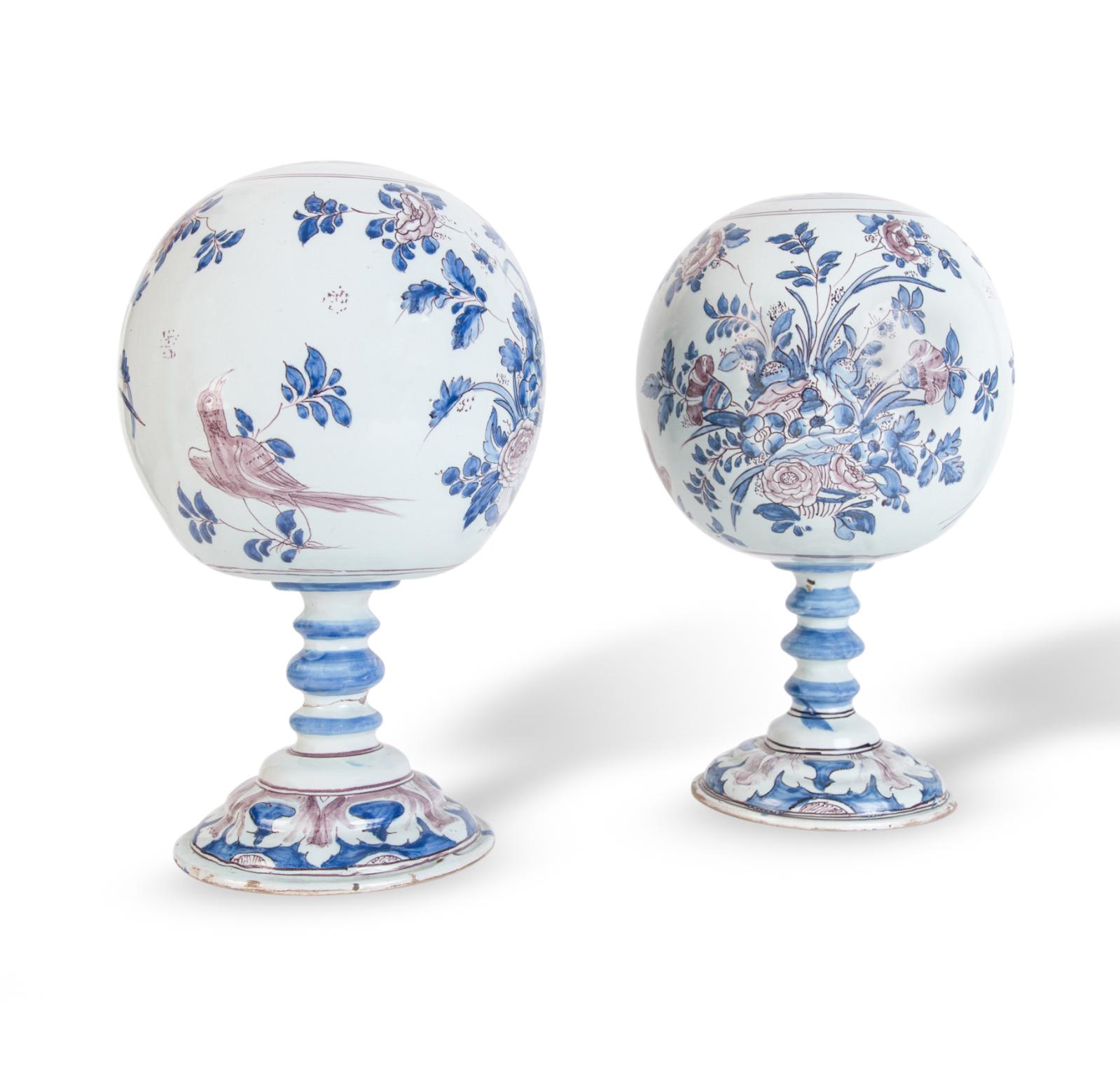by Anne Doridou-Heim

€8,216 Marseille, Saint-Jean-du-Désert, late 17th century. Pair of faïence wig stands decorated with blue and manganese birds and flowers, h. 31 cm/ 12.20 in. Marseille, December 4, 2020. Maison R&C, Commissaires-Priseurs Associés OVV
It was Louis XIII who made wig-wearing stylish in France: in the 1630s the king, whose entourage copied him by wearing their hair long, went prematurely bald. He started wearing wigs and, since appearances were everything, his courtesans followed suit to remain in his good graces. The fashion did not go out of style until the French Revolution, when many an aristocrat ended up losing his bewigged head. Ancient Egyptians and Romans had already worn wigs for baldness until the Church condemned the practice, leading to a nearly 1,000-year hiatus. Click here to read more!




